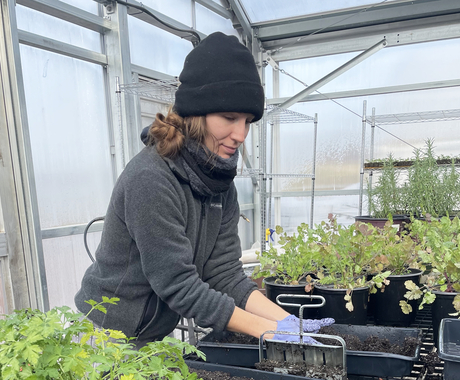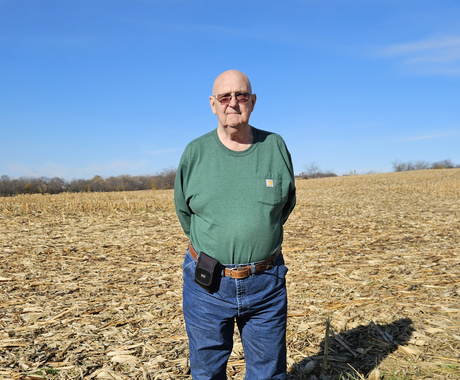By Kate Hansen, former staff member
For Ryan Collins of Harpers Ferry, Iowa, working on the family farm connects him to both past and future generations.
He and his spouse, Samantha, have three children under the age of six and one on the way. Their operation has been in the Collins family since 1851, and Ryan sees conservation as a tool to ensure its vitality for generations to come.
“The kids love being on the farm. Last night we went to move the cows to a new paddock, and my oldest one was petting a cow,” he said. “I want to make sure the opportunity is there if any of them want to farm.”
One way he has been able to enhance conservation on his operation is with the help of the Conservation Stewardship Program (CSP). In Iowa this year, applications for the program are due Feb. 19. Interested producers should reach out to their local Natural Resources Conservation Service (NRCS) office.
A graduate of Iowa State University, Ryan began farming full-time in 2010 while working with GPS technology sales and service along the way. His operation is based around an approximately 220 head cow-calf herd, and also includes hay, corn, and oats.
Ryan applied for CSP as a beginning farmer after hearing about it from a neighbor. He has since completed a five year contract, and is in his second. With the help of CSP, the farmer has planted forage, rotated his mineral blocks, and more. His experiences with CSP also motivated him to begin rotational grazing.
Administered by NRCS, CSP is a working lands conservation program that helps producers enhance conservation on their operations. Offering both financial and technical assistance, contracts are five years in length with the option to renew.
Enrolling in a CSP contract involves a producer and their local NRCS staff putting together a conservation plan uniquely fit for their operation. In Ryan’s case, practices were divided between his pasture and cropland.
The program has helped Ryan transform his pasture management. Part of his first contract required him to rotate his salt and mineral blocks, which eventually led him to pursue rotational grazing.
“For years, we would always say, ‘here’s the spot where you throw your salt and minerals’ and there’d be a bare spot out there,” Ryan said. “The idea of moving around where you put it in the pasture, I think it’s a great idea. It was simple, but it worked great.”
Now, with the help of CSP and NRCS’s Environmental Quality Incentives Program (EQIP), Ryan rotates his mineral blocks and rotationally grazes his cattle between paddocks. He also planted forage on a few acres that were previously unusable due to heavy brush. His local district conservationist helped him put together a seeding plan, and it is now usable ground for pasture.
Further, the farmer implemented a number of practices to improve soil and water quality on his cropland, including GPS targeted spraying, plant tissue testing to improve nitrogen management, and continuous no-till with high residue.
Even after his first contract expired, Ryan chose to continue with the practices.
“We still do everything from the CSP contracts, that’s been since 2011,” he said. “We’ve just kind of continued with it, because it’s been beneficial ever since. The financial kick got us rolling, but once we saw the benefits with it, we wanted to keep going.”
Those benefits, he said, are diverse, from the conservation impacts to financial gain in the long run. The technical assistance provided by NRCS was also worthwhile.
“Having the NRCS office to lean on and get started with some of these programs and the technical assistance, it’s been great for getting started and after doing it, we continued doing it,” he said. “As a beginning farmer, that was huge.”
The neighbor who told Ryan about the program was later in his farming career, and shared that CSP worked equally well for his operation. That’s why Ryan encourages all farmers, whether beginning or seasoned, to look into CSP and see how it could help them achieve their goals.
Farmers interested in applying for CSP or learning more about the program should reach out to their local NRCS office. Click here to find your local service center.
Featured photo by Jason Johnson, USDA Natural Resources Conservation Service.





